Displaying items by tag: INGEDE
Printed matter and white packaging are valuable raw materials for deinkers
The recycling paper industry needs raw material – fewer newspapers, less advertisement also after the Corona pandemic and increased electronic communication lead to decreasing amounts of paper for recycling. Where will our raw material come from in the future? "What is growing? What is shrinking? Who needs which fibres?" asks Arne Kant (AFRY Management Consulting) and shows the market, but also possible alternatives if it no longer supplies the paper needed.
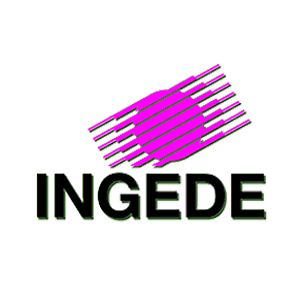 Still, too much of the collected paper for recycling bypasses the sorting plants and thus the deinking plants of the paper mills and goes directly towards packaging – there, demand continues to rise due to the ongoing "Amazonitis". Do we need regulatory assistance for paper recycling here? In any case, we need the white packaging. In year 4 after the new German packaging law, INGEDE asks representatives of the packaging industry: Which alternatives to plastic have become established, what does the market want, what not? Answers are provided by Jürgen Schwald of BMS Papier Concept, who supplies the market leaders with packaging, and Urban Buschmann, once the father of the paper freezer bag at FRoSTA.
Still, too much of the collected paper for recycling bypasses the sorting plants and thus the deinking plants of the paper mills and goes directly towards packaging – there, demand continues to rise due to the ongoing "Amazonitis". Do we need regulatory assistance for paper recycling here? In any case, we need the white packaging. In year 4 after the new German packaging law, INGEDE asks representatives of the packaging industry: Which alternatives to plastic have become established, what does the market want, what not? Answers are provided by Jürgen Schwald of BMS Papier Concept, who supplies the market leaders with packaging, and Urban Buschmann, once the father of the paper freezer bag at FRoSTA.
In order to achieve the properties of plastics here, barriers are necessary – barriers also for recycling? What problems does this cause in the paper mill? And how do we ensure that only white packaging is directed towards deinking during sorting, and not more brown cardboard? The solution is promised by camera systems and artificial intelligence, which is the subject of the contributions by Michael Lindner (UPM), Jake Woolfenden (TrueCircle, London) and John Schulz (BTG Instruments). Arne Krolle (INGEDE) promises "more revenue and fewer returns" through "certification of sorting plants".
The accompanying regulatory framework is explained by Martin Drews (DIE PAPIERINDUSTRIE) with a contribution on the new voluntary commitment and Ulrich Leberle (Cepi, Brussels). He answers the questions on European packaging legislation: How does the Commission proposal affect the recycling industry, especially deinkers?
These and more expert speakers will show options for future sustainable raw material management in order to save more white fibres for the white cycle. More details about the programme on our website, please register here for three sessions packed with up-to-date information! The INGEDE Symposium is the only annual international event covering all paper recycling aspects from printing inks to collection and sorting to deinking technology.
The INGEDE Symposium will be a hybrid event – we hope to see you in Munich again for more background talks but will also provide an online stream.
We look forward to welcoming you in person in Munich again or online at your laptop!
Paper Recycling, Collection, Quality
The challenges increase, not only for the deinkers among paper mills – it becomes more and more difficult to produce new graphic paper from paper for recycling at economically reasonable conditions. Rising prices for paper for recycling increase the costs, at the same time the availability of graphic paper is going down – people read less newspapers, the newspapers become thinner due to less advertising, and the paper collected for recycling contains more and more packaging. The municipalities sometimes take advantage of new legislation to discourage locally competing selective collectors who deliver especially preferred quality. Concerned about the quantity of their supplies it becomes more and more difficult for the paper mills to keep up their requirements for high quality. A helpful aspect is the increasing importance of ecolabels such as the Blue Angel or the EU Ecolabel for printed products, for which also the removability of printing inks has to be proven.
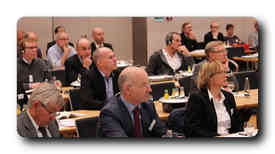 Quality is not only important for deinking grades, also the manufacturers of corrugated papers and board face the challenge to meet the rising demand at an acceptable quality, mainly for the increasing need for all kinds of packaging. A possible source for high quality paper for recycling is the fraction today known as mixed paper. How can, already by a more selective collection and sorting at the consumer, the yield be increased for the different grades, suitable for the different products? Here it is of some help to know the material flow: Where do the different fractions of paper for recycling end up, that are so valuable for the different grades to be produced?
Quality is not only important for deinking grades, also the manufacturers of corrugated papers and board face the challenge to meet the rising demand at an acceptable quality, mainly for the increasing need for all kinds of packaging. A possible source for high quality paper for recycling is the fraction today known as mixed paper. How can, already by a more selective collection and sorting at the consumer, the yield be increased for the different grades, suitable for the different products? Here it is of some help to know the material flow: Where do the different fractions of paper for recycling end up, that are so valuable for the different grades to be produced?
New digital printing processes are a perennial issue at the INGEDE Symposium in Munich: Mostly the inks and therefore also their behaviour in the deinking process differ fundamentally from traditional offset and gravure inks. While dry toners (from laser printers) are generally good deinkable, some inkjet prints create problems. But here a lot has been achieved within the last years, some manufacturers have improved their processes and inks significantly. David Croll of Océ Printing Systems will present the history of inkjet printing and new, better deinkable inkjet processes at the symposium.
Undeinkable Prints can Create Problems in the recycling Process
Some might remember that prints with liquid toner from HP Indigo are not suitable for the deinking process. Similar problems can arise from UV-curable inks – here the inks cross-link due to a polymerisation induced by UV light sources. In many cases the resulting large particles are not sufficiently separable, also because they are not as water-repellent (hydrophobic) compared to traditional offset inks. But also here some differences can be observed; at the INGEDE Symposium the reasons for the increasing prevalence of UV-cured prints and the resulting problems will be discussed.
 Quality of Paper for Recycling Continues to be a European Issue
Quality of Paper for Recycling Continues to be a European Issue
Different collection rates in different European countries continue to be a challenge. In his keynote presentation, Ulrich Leberle of CEPI in Brussels will explain the measures for a circular economy that the European Commission aims at together with the European paper industry.
Paper Industry 4.0: The Digital Revolution in Papermaking?
The classical process optimisation undergoes a revolution. There are new and better answers to old questions, better than ever: Jürgen Käser, Voith’s expert for the paper industry 4.0, will present these answers. Which kind of raw material composition will reduce production costs without harming productivity? What is the relationship between the frequency of tear-off and the way the plant is being run? What application of primary energy is absolutely necessary for a certain grade? Novel mathematical modelling in real-time lead to new process dynamics, this results in highly stabilised and cost effective production processes – not to be reached by human hand so far. And the first practical applications show: Also papermaking is at the edge of a digital revolution.
Since its establishment in 1989, INGEDE for more than 25 years now deals with the common problems of the deinkers. INGEDE has become well known also for the development of test methods that in the meantime have become established and reliable international standards. Many ecolabels for printed products are based on these standards.
Registration: Free of charge for member companies and the press, for all others please understand that we charge a nominal fee to cover our expenses. Please contact us for an invitation if you’re not on our mailing list yet. The venue, “Haus der Bayerischen Wirtschaft”, is within walking distance from Munich Central Station.
You are welcome to join us for the upcoming INGEDE Symposium on February 28, 2018 in Munich! Hear and discuss with us about recent topics in paper recycling and the state of research projects financed by INGEDE! The INGEDE Symposium is the only international meeting covering all aspects from paper recovery to quality aspects to process engineering issues. The full program together with updated details is attached and available on our website www.ingede.com/symposium
Pay Attention to Recycling: Low-energy UV Printing is not necessarily environmentally friendly
Cross-linked inks are difficult to remove in the deinking process — coloured dots within the paper fibres
Coloured specks on the recycled paper: Just because the curing radiation can now be generated by energy-saving LEDs, instead of high-power mercury bulbs, some try to market UV printing processes to be environmentally friendly. However, the shiny appearances are deceptive: Prints with radiation-cured inks can considerably impair paper recycling because they can hardly be deinked.*
UV-curable printing inks to date hardly fulfil criteria for good recyclability. All inks tested so far contaminate the processed paper for recycling with far too many ink particles that can not or not sufficiently be removed during the paper recycling process. This is also the case for UV-curable inks used in some inkjet printers.
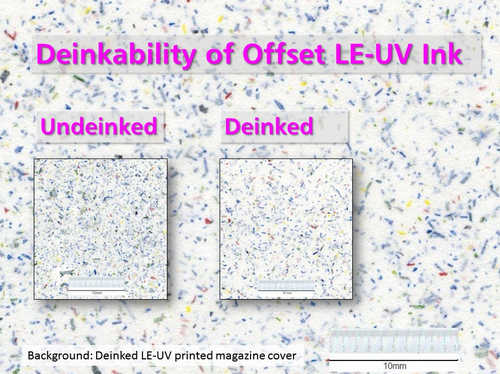
As small amounts of papers printed with UV-cured inks can impair the deinkability of a load of paper for recycling, UV-prints have to be kept separately where they accumulate, e. g. printer waste, and must not be mixed with other graphic papers for deinking. Once they have left the print shop, it is almost impossible to identify and separate them during collection and recycling processes. Newly developed inks might be a way out, if they are designed to be removable in the paper recycling process: They should detach from the fibres under the alkaline pulping conditions, disintegrate into small particles, and leave the process clinging to the soap bubbles in a flotation cell.
Water is not better than oil: Check your ink’s properties
Different printing inks pose different challenges to the deinking process. Water based inks cause problems as they dissolve in the process water; cross-linked particles due to their size, flexibility or surface properties can neither be separated mechanically (screens) nor by flotation. This is why — also without UV-curing — most current commercially used inkjet inks are rated undeinkable. Already in small amounts they can lead to severe brightness problems in the paper mill.
Another cross-linked challenge is polyethylene liquid toner (HP Indigo), currently used for most of the photobooks. This is a thin plastic film rather than a conventional printing ink. During the recycling process, this film breaks into snippets, which cannot be removed sufficiently. These snippets have already led to significant damage in a paper mill, since then photobook printer waste must not be mixed with graphic paper for recycling and at best be used for corrugated board.
More ink, more variety, less fibres
At the same time, with decreasing grammage of newspapers and more coloured illustrations, paper mills have to remove more and more ink from less and less fibres.
Together with ink manufacturers, the respective associations, and publishers paper mills continuously check the deinkability of current printed products. For this purpose together with the European Recovered Paper Council (ERPC) a scoring system has been developed.** Together the industries look for ways to replace poor deinkable printing inks by more recycling-friendly solutions.
INGEDE is an association of leading European paper manufacturers founded in 1989. INGEDE aims at promoting utilisation of graphic paper for recycling (newsprint, magazines and office paper) and improving the conditions for an extended use of paper for recycling for the production of graphic and hygiene papers.
* Deinking is the removal of printing ink during the paper recycling process.
** ERPC is the European Recovered Paper Council. The “Deinkability Score” system is available from the ERPC website www.paperrecovery.org.
Low-energy UV Printing is not necessarily environmentally friendly
Pay Attention to Recycling: Low-energy UV Printing is not necessarily environmentally friendly
Cross-linked inks are difficult to remove in the deinking process – coloured dots within the paper fibres
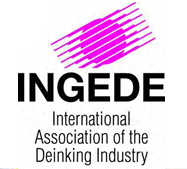 Coloured specks on the recycled paper: Just because the curing radiation can now be generated by energy-saving LEDs, instead of high-power mercury bulbs, some try to market UV printing processes to be environmentally friendly. However, the shiny appearances are deceptive: Prints with radiation-cured inks can considerably impair paper recycling because they can hardly be deinked.*
Coloured specks on the recycled paper: Just because the curing radiation can now be generated by energy-saving LEDs, instead of high-power mercury bulbs, some try to market UV printing processes to be environmentally friendly. However, the shiny appearances are deceptive: Prints with radiation-cured inks can considerably impair paper recycling because they can hardly be deinked.*
UV-curable printing inks to date hardly fulfil criteria for good recyclability. All inks tested so far contaminate the processed paper for recycling with far too many ink particles that can not or not sufficiently be removed during the paper recycling process. This is also the case for UV-curable inks used in some inkjet printers.
As small amounts of papers printed with UV-cured inks can impair the deinkability of a load of paper for recycling, UV- prints have to be kept separately where they accumulate, e. g. printer waste, and must not be mixed with other graphic papers for deinking. Once they have left the print shop, it is almost impossible to identify and separate them during collection and recycling processes.
Newly developed inks might be a way out, if they are designed to be removable in the paper recycling process: They should detach from the fibres under the alkaline pulping conditions, disintegrate into small particles, and leave the process clinging to the soap bubbles in a flotation cell.
Water is not better than oil: Check your ink’s properties
Different printing inks pose different challenges to the deinking process. Water based inks cause problems as they dissolve in the process water; cross-linked particles due to their size, flexibility or surface properties can neither be separated mechanically (screens) nor by flotation. This is why
– also without UV-curing – most current commercially used inkjet inks are rated undeinkable. Already in small amounts, they can lead to severe brightness problems in the paper mill.
Another cross-linked challenge is polyethylene liquid toner (HP Indigo), currently used for most of the photobooks. This is a thin plastic film rather than a conventional printing ink.
During the recycling process, this film breaks into snippets, which cannot be removed sufficiently. These snippets have already led to significant damage in a paper mill, since then photobook printer waste must not be mixed with graphic paper for recycling and at best be used for corrugated board.
More ink, more variety, less fibres
At the same time, with decreasing grammage of newspapers and more coloured illustrations, paper mills have to remove more and more ink from less and less fibres.
Together with ink manufacturers, the respective associations, and publishers paper mills continuously check the deinkability of current printed products. For this purpose together with the European Recovered Paper Council a scoring system has been developed.** Together the industries look for ways to replace poor deinkable printing inks by more recycling-friendly solutions.
INGEDE is an association of leading European paper manu- facturers founded in 1989. INGEDE aims at promoting utilisa- tion of graphic paper for recycling (newsprint, magazines and office paper) and improving the conditions for an extended use of paper for recycling for the production of graphic and hygiene papers.
* Deinking is the removal of printing ink during the paper recycling process.
** ERPC is the European Recovered Paper Council. The “Deinkability Score” system is available from the ERPC website www.paperrecovery.org
Collaboration on Deinkability of Inkjet Prints
On February 14, 2011, executives from the DPDA (Digital Print Deinking Alliance) and INGEDE (International Association of the Deinking Industry) together signed a Letter of Intent for collaboration to investigate the deinking of inkjet prints. The primary objective of this collaboration is to identify new solutions suitable for combined recovered paper streams with analogue and digital prints. The target is to enable inkjet manufacturers as well as deinking mills to better anticipate their commercial and environmental requirements as inkjet print volumes become more significant.
“Inkjet is likely to be a relevant process in digital production printing in the future,” said Ulrich Hoeke, INGEDE Board Chairman, “and it is essential to maintain recovered graphic paper as a raw material for recycled-content graphic papers by ensuring good deinkability of inkjet prints.”
This DPDA–INGEDE Letter of Intent for collaboration on inkjet deinkability provides a structure for regular, detailed exchange of relevant data, and jointly-sponsored research projects under the direction of a Technical Committee with representatives from both organizations. Both DPDA and INGEDE recognize that feasible solutions may involve optimization of ink, pre- and post-treatment, paper characteristics and the deinking process. This DPDA–INGEDE Technical Committee has already had its first meeting, and plans to conduct at least one jointly-managed research project this year.
The paper industry already experiences considerable problems in recycling prints with water-based flexo inks. In order to avoid similar problems with water-based inkjet inks, paper industry and printer manufacturers will intensify their cooperation. Speaking on behalf of the DPDA, Crit Driessen, Vice President Marketing and Strategy Production Printing, Océ Printing Systems GmbH, said that “the DPDA recognizes that although there have been no single inkjet deinking issues reported in recycling mills, lab-scale assessments show a range of deinkability performance, and therefore it is important to identify the attributes and thresholds for successful deinking so the overall solution can be optimized. This Letter of Intent for collaboration on inkjet print deinkability is an important step forward for the paper and printing industry to help ensure that the benefits of inkjet printing are realised by all participants in the value chain.”
Accidental Deinking Trial: Liquid Toner Prints Cause Significant Damage in German Paper Mill
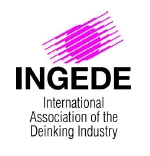 For the first time, a significant production loss could be traced back to a digital printing technology that is not compatible with the existing paper recycling system. For a long time it had been suspected that small flakes resulting from liquid toner films as used in HP Indigo's production printers are difficult to remove. INGEDE issued its first press release about these problems already in 2001. Still, trials in labs and pilot plants did not lead to enough evidence to ban liquid toner prints from the deinking* paper mills' list of raw materials. It had been assumed that sufficient dilution would allow the paper mills to cope with this new challenge.
For the first time, a significant production loss could be traced back to a digital printing technology that is not compatible with the existing paper recycling system. For a long time it had been suspected that small flakes resulting from liquid toner films as used in HP Indigo's production printers are difficult to remove. INGEDE issued its first press release about these problems already in 2001. Still, trials in labs and pilot plants did not lead to enough evidence to ban liquid toner prints from the deinking* paper mills' list of raw materials. It had been assumed that sufficient dilution would allow the paper mills to cope with this new challenge.
In late August, paper engineers at a German paper mill were alarmed by rapidly increasing dirt speck numbers in con-trol samples during the production of high quality graphic paper. 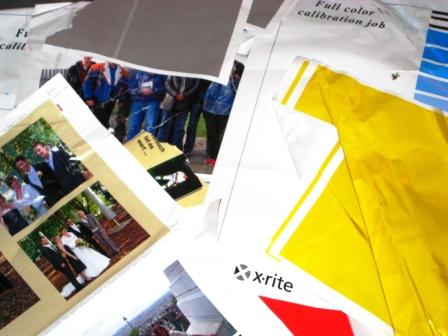 Though an intense search within the raw material used began immediately, seven reels with 20 tons of paper each had to be dumped until liquid toner prints coming from a photo book printer could be identified to be the source. This material had been bought together with other high quality recovered paper specified as grade “Multi Printing” (3.10).
Though an intense search within the raw material used began immediately, seven reels with 20 tons of paper each had to be dumped until liquid toner prints coming from a photo book printer could be identified to be the source. This material had been bought together with other high quality recovered paper specified as grade “Multi Printing” (3.10).
As the share of liquid toner prints had already been less than three percent, the remaining stock had to be diluted further and monitored carefully during the following weeks. The paper mill affected has the most sophisticated deinking plant in Europe, using a two-loop flotation system with two dis-persers that were operated at high energy input during the production. The estimated paper production loss sums up to about 140 tons of premium quality paper. The damage for the paper mill – only for the paper dumped, not including standstill or others – is more than 100,000 Euro.
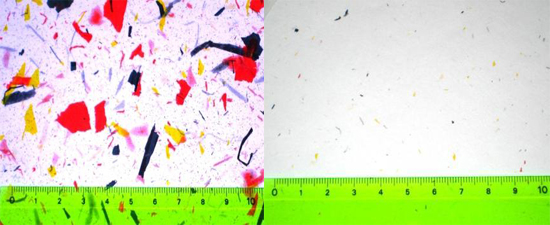
Indigo print samples from the original delivery, tested in the lab, after pulping (left) and after two flotations and one dispersing step (right).
Liquid Toner Prints to Be Avoided
As a consequence, liquid toner prints should be avoided in recovered paper for deinking and directed towards corrugated board production only. In other mills where less effort is used to produce e. g. newsprint, a comparable load of recovered paper could have lead to even more intense quality problems.
Dirt specks also have to be avoided in tissue mills. INGEDE and its members now advise recovered paper merchants, to collect liquid toner overprint separately from other graphic papers and direct it toward the production of corrugated board.
INGEDE is an association of leading European paper manu-facturers founded in 1989. INGEDE aims at promoting utili-sation of recovered graphic paper (newsprint, magazines and office paper) and improving the conditions for an ex-tended use of recovered paper for the production of graphic and hygiene papers.
* Deinking is the removal of printing ink from the recovered paper during the paper recycling process.
International Association of the Deinking Industry (INGEDE) Public Relations
Oetztaler St 5 B • 81373 München • Germany Tel. +49 (89) 769 2332 • E-Mail This email address is being protected from spambots. You need JavaScript enabled to view it.
